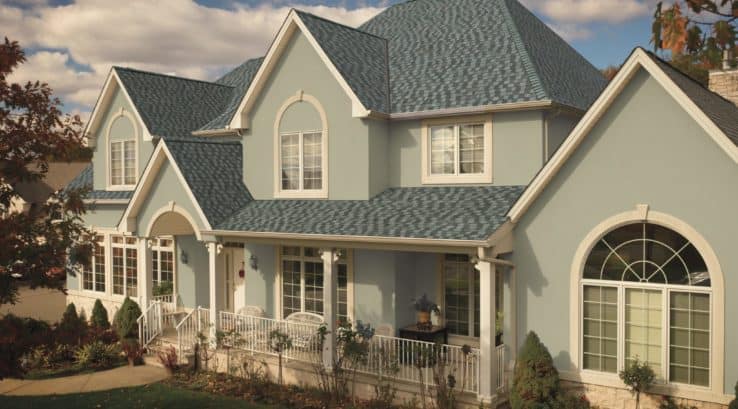How to Choose a Siding Style
Style, affordability, energy efficiency and protection all factor in when choose an exterior for your home.
Here are a couple of reasons you may be looking for a change in your home’s exterior:
- It’s time to sell and you need to update your home’s first impression
- You are looking to lower your utility bills
- You need better protection against the Mid-Atlantic temperature swings
- You need a maintenance-free option
Here’s a look at some of the types of materials for your home’s exterior siding.
Brick
Classic and durable, brick has been used since the 19th century, and creates a traditional, warm aesthetic. Although it is arguably the most expensive material to choose from, at around $10 per square foot, it essentially lasts a lifetime with virtually no maintenance required.
There are cheaper variations that are available if you’re only looking for the appearance of brick, such as thin brick, that is simply installed over the existing siding. However, this variation will not offer the same perks as classic brick siding, such as sound blocking properties and durability against extreme weather conditions.
Brick is the sturdiest option and lasts the longest, but installation will most likely require a professional, and if you want it to last the full potential of its lifetime, installation costs are generally pretty high.
On the downside, damaged bricks are not easily repaired and may require more than just the one damaged brick to be removed. The rebuilding process can require time and expense while the weakened area is fixed.
In the Mid Atlantic, we can experience big temperature swings. Brick and mortar doesn’t have the ability to expand and contract to handle repeated temperature swings and the brick and mortar can break down.
Also damaging to brick can be moisture that gets trapped leading to mold, fungus and eventual crumbling.
Vinyl
An increasingly popular option for siding is vinyl. It’s affordability and minimal upkeep make vinyl a popular choice. Looking to update an older home? Vinyl siding can make a big impact quickly. It can be installed on top of existing materials.
New production technologies have expanded the look and versatility of vinyl as a siding options for homeowners. There are many different styles and hues to choose from that can be made to complement accents of your house, such as brick and wood. If well-kept, vinyl offers an affordable, clean look to your house.
Upkeep is often just power washing and inspecting the vinyl surface for any cracks or dents. Repair may require removal of a sheet of the vinyl material and replacement with an identical slider.
Not all vinyl is made alike so choosing a vinyl from a quality producer is important as some inferior brands can crack easy or fade. Installation should also be done by a professional who makes sure it is not only measured properly but the product leaves no gaps or spaces where moisture can settle into the home’s foundation and drywall.
Stucco
Stucco was traditionally a siding option for the Southwest. Arid temperatures, fire resistance and stable soil made stucco a popular option. In hotter climates, stucco has a unique method of holding in moisture before evaporation and can actually help keep your house comfortably cool. While purchasing costs and maintenance costs are generally low, stucco must be installed in three specific layers, which makes installation costs higher than you’d expect. This process is what causes stucco to be so durable and diligent, so it will be worth it in the long run.
Stucco can, however be susceptible to hairline cracks from foundation settlements. Stucco repairs can be made fairly quickly if they are discovered. However, undiscovered small cracks can allow moisture into the home’s drywall and also cause larger chunks of stucco to crumble and fall off.
Homeowners in the Mid-Atlantic may find stucco isn’t the best insulator for their home. Stucco has only about 20 percent the insulation factor as wood making it less energy efficient for this part of the country.
Wood siding
Traditional wood siding is timeless. But getting that timeless look can be time consuming. Wood comes in a great variety of styles from clapboard to shingles to shake. Add in the rainbow of stains and your options are endless.
So too might be your task in making sure your wood siding looks like you want it to look. Wood can fad and rot. So, while it is a great look, those going for wood siding should be aware of the upkeep.
Your home’s exterior plays a key role in the curb appeal for your home. So whether you are looking to put your home on the market, just want to update its look or repair a damaged façade, take the time to evaluate your siding options.
How to Choose a Siding Style


